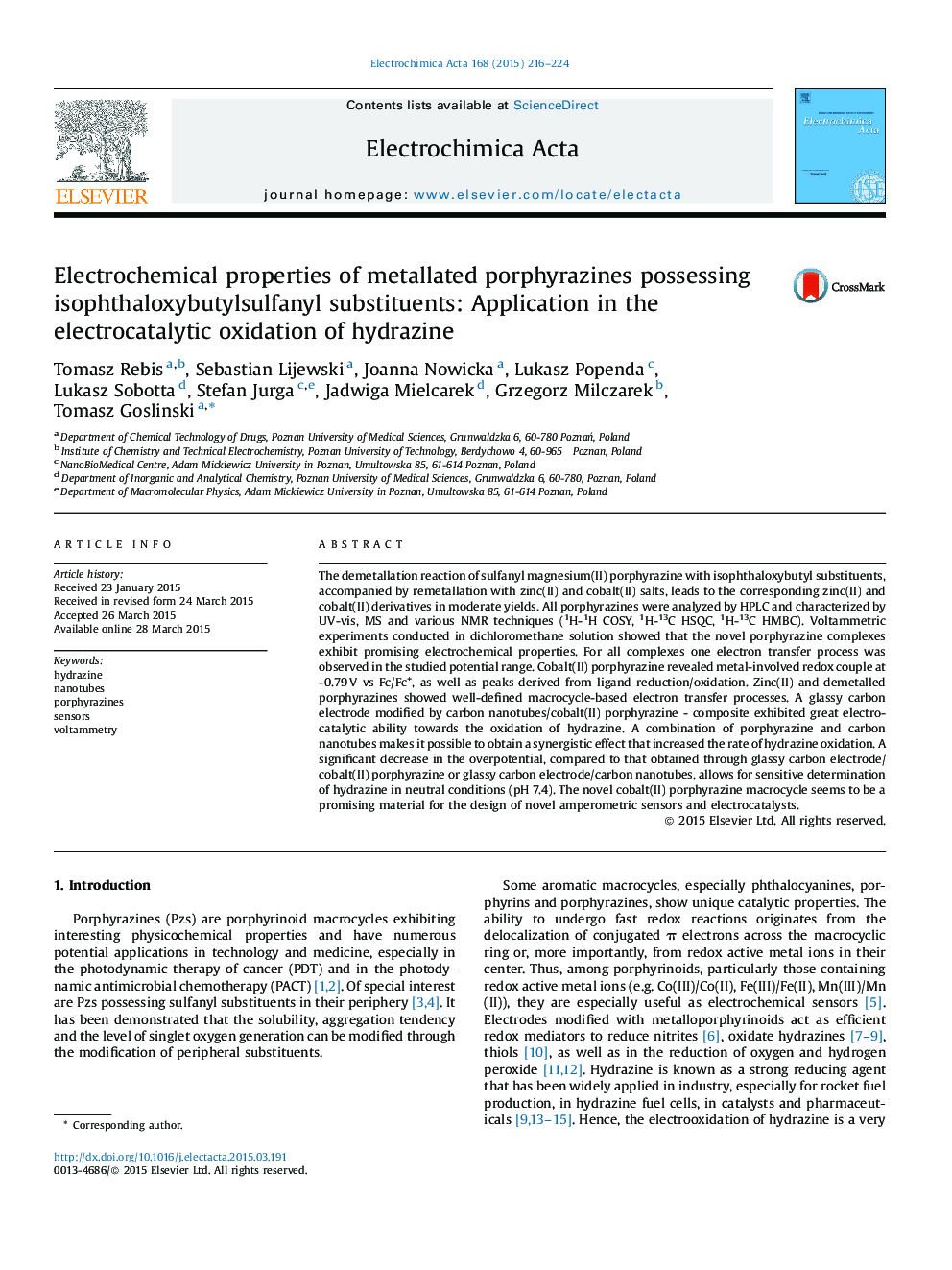| Article ID | Journal | Published Year | Pages | File Type |
|---|---|---|---|---|
| 184237 | Electrochimica Acta | 2015 | 9 Pages |
•Cobalt(II) porphyrazine with isophthaloxybutylsulfanyl substituents was synthesized.•Compound exhibited promising electrochemical properties.•Compound may be considered for the design of amperometric sensors, electrocatalysts.
The demetallation reaction of sulfanyl magnesium(II) porphyrazine with isophthaloxybutyl substituents, accompanied by remetallation with zinc(II) and cobalt(II) salts, leads to the corresponding zinc(II) and cobalt(II) derivatives in moderate yields. All porphyrazines were analyzed by HPLC and characterized by UV-vis, MS and various NMR techniques (1H-1H COSY, 1H-13C HSQC, 1H-13C HMBC). Voltammetric experiments conducted in dichloromethane solution showed that the novel porphyrazine complexes exhibit promising electrochemical properties. For all complexes one electron transfer process was observed in the studied potential range. Cobalt(II) porphyrazine revealed metal-involved redox couple at -0.79 V vs Fc/Fc+, as well as peaks derived from ligand reduction/oxidation. Zinc(II) and demetalled porphyrazines showed well-defined macrocycle-based electron transfer processes. A glassy carbon electrode modified by carbon nanotubes/cobalt(II) porphyrazine - composite exhibited great electrocatalytic ability towards the oxidation of hydrazine. A combination of porphyrazine and carbon nanotubes makes it possible to obtain a synergistic effect that increased the rate of hydrazine oxidation. A significant decrease in the overpotential, compared to that obtained through glassy carbon electrode/cobalt(II) porphyrazine or glassy carbon electrode/carbon nanotubes, allows for sensitive determination of hydrazine in neutral conditions (pH 7.4). The novel cobalt(II) porphyrazine macrocycle seems to be a promising material for the design of novel amperometric sensors and electrocatalysts.
Graphical abstractFigure optionsDownload full-size imageDownload as PowerPoint slide
